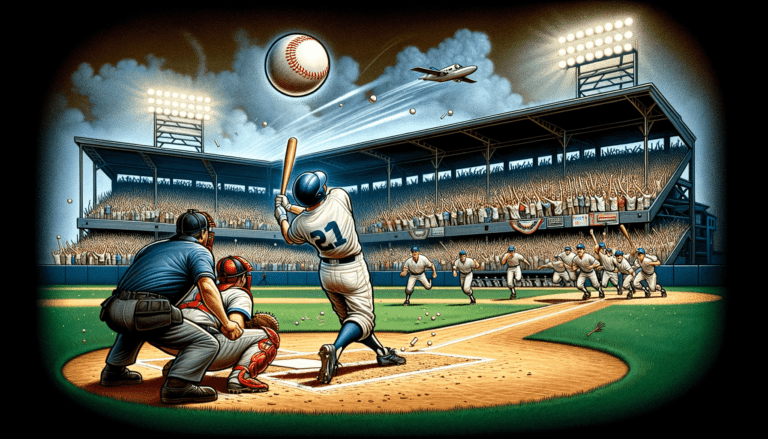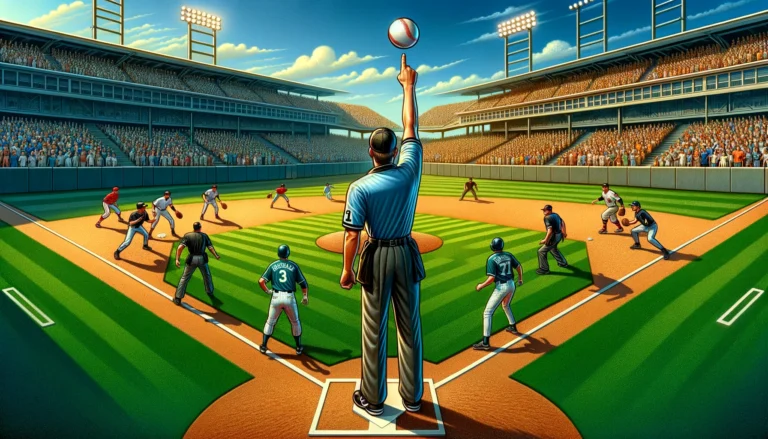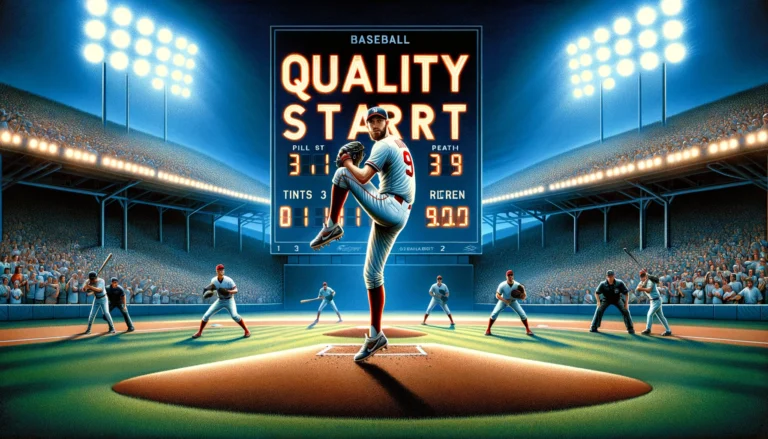Is Baseball Harder than Softball?
Is baseball harder than softball? The answer is no, baseball is not inherently harder than softball. Each sport has unique challenges that make them difficult in different ways.
Baseball typically features faster pitches and a larger field, while softball involves quicker reactions due to closer bases and a larger ball, which can be harder to hit due to its movement.
In this article, we’ll explore the key differences and challenges of both sports, helping you understand why each sport can be tough in its own right.
Key Takeaways
- Baseball and softball differ significantly in field dimensions, equipment, and pitching styles, which influences the difficulty of each sport.
- Both sports demand high levels of athleticism and strategic thinking, but they pose different physical and mental challenges to players.
- Excelling in baseball or softball requires mastering sport-specific batting, fielding, and pitching skills, with each sport having its own subtleties.
- Effective training and preparation are crucial in both baseball and softball, with tailored conditioning programs, practice routines, and coaching styles.
- Cultural and social perspectives play a role in shaping the perceived difficulty of baseball and softball, with gender dynamics and the sports’ evolution influencing public opinion.
Understanding the Fundamentals: Baseball vs. Softball
Field Dimensions and Equipment Differences
When comparing baseball and softball, one of the most noticeable differences lies in the field dimensions and equipment.
In softball, the regulation playing field forms a diamond with 60-foot baselines, a notable contrast to baseball’s larger diamond with 90-foot baselines.
The pitching distance in softball also varies, with men pitching from 46 feet.
The equipment used in each sport is tailored to these dimensions. Softballs are larger and less dense than baseballs, which affects how they are hit and thrown.
Bats also differ, with softball bats being shorter and often having a different weight distribution. These variations influence the style of play and the skills required to excel in each sport.
- Regulation playing field for softball includes a diamond-shaped area with 60-foot baselines.
- Pitching distance for men in softball is 46 feet.
- Softballs are larger and less dense than baseballs.
- Softball bats are shorter and have a different weight distribution compared to baseball bats.
Pitching Styles and Game Speed
The contrast in pitching styles between baseball and softball is one of the most distinctive differences between the two sports.
In baseball, pitchers deliver the ball overhand or sidearm at high velocities, often exceeding 90 miles per hour.
Softball, conversely, is characterized by underhand pitching, with the ball typically traveling at slower speeds.
However, due to the closer pitching distance in softball, the reaction time for batters can be equivalent to that in baseball.
- Baseball: Overhand or sidearm pitching, high velocity.
- Softball: Underhand pitching, slower ball speed, but similar batter reaction time.
The game speed in baseball pitchers throw both sports is influenced by these pitching styles. Baseball games tend to have a slower pace due to the longer time between pitches and the greater distance the ball travels.
Softball games, especially the more slow pitch softball variant, can move more quickly with rapid succession of plays and a smaller field of play.
This difference in tempo affects not only the players’ physical response but also their mental acuity and strategic planning during the game.
Rules and Regulations: A Comparative Analysis
When comparing the rules and regulations of baseball and softball, it’s evident that both sports share a common ancestry but have evolved distinctively.
For instance:
- Baseball typically features nine innings, while softball games are usually seven innings long.
- The distance between bases in softball is shorter, which affects base stealing strategies.
- Softball uses a larger ball and mandates that pitchers throw underhand, creating a different pitching dynamic.
These variations not only influence the style of play but also the strategies teams employ during a game.
Understanding these differences is crucial for players transitioning between the sports, as they can significantly impact game outcomes.
Read Also: Is Baseball a Contact Sport
Physical and Mental Challenges in Baseball and Softball

The Athletic Demands of Each Sport
Baseball and softball, while similar in many respects, present unique athletic challenges to their players.
Baseball typically requires a greater degree of power and speed, due to the larger field dimensions and the velocity of the pitched ball.
Players must be able to sprint quickly, whether stealing bases or chasing down fly balls.
Softball, on the other hand, emphasizes agility and quick reflexes, particularly for infielders who must react to the fast-paced, often unpredictable batted balls.
The compact playing field and the nature of underhand pitching also necessitate a different kind of athletic prowess:
- Quick lateral movements
- Explosive starts and stops
- The ability to quickly transition between offensive and defensive roles
Both sports demand high levels of hand-eye coordination, cardiovascular fitness, and muscular strength.
However, the specific skills and conditioning required can vary significantly between baseball players and softball players.
Strategic Thinking and Decision Making
In the realm of baseball and softball, strategic thinking and decision making are pivotal for success on the field.
Players must constantly assess situations and make split-second decisions that can alter the course of the game.
The ability to anticipate plays and react accordingly is a skill honed through experience and keen observation.
Key aspects of strategic thinking in these sports include:
- Understanding the strengths and weaknesses of opponents
- Knowing when to attempt high-risk plays, such as stealing bases
- Adjusting field positions based on the current batter and game context
Coaches also play a crucial role in strategy, often signaling plays from the dugout. Their decisions on lineup changes, pitching rotations, and in-game tactics are critical.
Players and coaches alike must maintain a deep understanding of the game’s intricacies to outmaneuver the opposition and secure victories.
Coping with Pressure: Player Experiences
The ability to cope with pressure is a defining factor in the success of athletes in both baseball and softball.
Players often recount moments where the game hinges on their performance, and the weight of expectation can be immense.
- Teach players practical coping strategies for managing stress and anxiety during games. This could include techniques such as mindfulness meditation, which has been shown to improve focus and calmness under pressure.
- Encourage a supportive team environment where players feel comfortable expressing their anxieties and seeking help. A culture of openness can significantly reduce the mental burden on individual players.
- Implementing routine performance reviews can help players understand and learn from high-pressure situations, turning potential stressors into opportunities for growth.
Read Also: Why is Baseball So Boring
Skill Sets: What It Takes to Excel

Batting Techniques and Hitting Proficiency
The art of batting in baseball and softball is both complex and nuanced, requiring a blend of physical prowess and mental acuity.
The stance, swing mechanics, and timing are critical components that differentiate a proficient hitter from the rest.
Players must develop a keen eye for pitch recognition, adjusting their swing for various pitch speeds and movements.
- Stance involves the batter’s body alignment and positioning in the batter’s box.
- Swing mechanics encompass the motion of the bat, from the grip to the follow-through.
- Timing is the synchronization of the batter’s movements with the pitcher’s delivery.
In both sports, hitting proficiency is not solely about power; it’s about the ability to consistently make contact and place the ball strategically on the field.
This requires hours of practice, studying pitchers, and understanding situational hitting.
Coaches often emphasize the mental aspect of hitting, encouraging players to anticipate pitches and think along with the game, which can be as crucial as the physical execution.
Fielding Skills and Defensive Strategies
In both baseball and softball, fielding is a critical skill that requires players to anticipate and react swiftly to the ball’s movement.
The basic skills involve handling a ball that is struck by a bat, which can vary from chasing down fly balls to gauging where a pop-up will land.
Effective fielding strategies often include:
- Proper positioning based on the batter’s profile and the game situation
- Communication among team members to prevent collisions and missed catches
- Mastery of the quick transfer from glove to throwing hand for efficient outs
Developing these skills requires repetitive practice and a keen understanding of the game’s dynamics.
Players must also adapt to different field conditions and learn to read the ball off the bat, which can be influenced by factors such as wind and sunlight.
Pitching Mastery: A Tale of Two Mounds
Pitching in baseball and softball is a complex art, requiring a blend of power, precision, and strategy.
The mechanics of pitching differ significantly between the two sports, with most professional baseball pitchers typically involving an overhand throw from a raised mound, while softball pitchers use an underhand motion from a flat pitching circle.
- In baseball, pitchers stand 60 feet 6 inches from home plate on a mound that elevates them 10 inches above the playing field. This height advantage allows for a downward trajectory, which can make pitches harder to hit.
- Softball pitchers, conversely, operate from a distance of 43 feet on level ground with the batter, emphasizing movement and change of speed over sheer velocity.
The mastery of pitching in either major league baseball or sport is not just about physical prowess; it also encompasses the mental game.
Pitchers must outthink batters, selecting the right type of pitch and placement to exploit weaknesses.
This cerebral aspect of pitching adds a layer of complexity that is often underestimated when comparing the difficulty of baseball and softball pitches.
See Also: Do Baseballs Float
Training and Preparation: A Comparative Look

Conditioning Programs for Baseball and Softball Players
Conditioning programs for baseball and softball players are tailored to enhance specific athletic abilities required in each sport.
Strength and agility are fundamental, as they contribute to batting power and defensive maneuverability.
Players often engage in weight training, plyometrics, and speed drills to build these attributes.
A well-rounded conditioning program also includes exercises focused on improving rotational power, crucial for effective swinging and throwing.
This aspect of training is often addressed through sport-specific drills and resistance training that mimic game movements.
Lastly, endurance training is essential, as players must maintain a high level of performance throughout the duration of a game.
Cardiovascular exercises such as running, cycling, or swimming are incorporated to ensure athletes can sustain energy levels inning after inning.
Practice Routines and Drills
Effective practice routines and drills are essential for baseball and softball players aiming to improve their skills.
Consistency is key, as it allows players to refine their techniques and build muscle memory. For hitters, drills that focus on timing, bat speed, and power are crucial.
Pitchers, on the other hand, benefit from drills that enhance accuracy, pitch variety, and stamina.
A typical practice session might include the following drills:
- Tee work to perfect swing mechanics
- Soft toss drills for improving hand-eye coordination
- Fielding grounders to enhance defensive reactions
- Bullpen sessions to work on pitch control and delivery
It’s important to note that baseball & softball hitting drills are not just about repetition; they’re about purposeful repetition that builds on the fundamentals of the game.
Coaches like Megan emphasize the importance of drills that challenge players while still reinforcing the core aspects of batting and fielding.
The Role of Coaching in Player Development
Coaching in baseball and softball transcends beyond mere oversight of physical training and tactical planning.
The best coaches are often seen as educators, tasked with the mission to inform and shape the next generation of ballplayers.
They instill essential qualities such as discipline, teamwork, and resilience, which are crucial for success on the field.
A coach’s influence is evident in several key areas:
- Development of fundamental skills and techniques
- Mental toughness and strategic game understanding
- Nutritional guidance and injury prevention
Moreover, successful coaches foster a positive team environment and encourage continuous improvement through personalized feedback and support.
They are the architects of a team’s culture and play a pivotal role in the holistic development of their athletes.
Cultural and Social Perspectives on Difficulty

Perceptions of Difficulty in Sports Culture
The debate over the relative difficulty of hitting a baseball, versus softball often hinges on cultural perceptions that transcend the physical aspects of each sport.
Societal views on athleticism and gender can heavily influence opinions on which sport is harder.
- Baseball is traditionally seen as a ‘tougher’ sport due to its professional prominence and the speed of the game.
- Softball, despite its high skill level, often battles stereotypes that label it as a less challenging version of baseball.
These perceptions are not static, however, and they evolve with the changing landscapes of both sports.
As more people become educated about the intricacies of college softball, and baseball, the respect for each sport’s unique challenges grows.
The dialogue surrounding difficulty is an ongoing conversation that reflects broader societal attitudes toward sports and competition.
Gender Dynamics in Baseball and Softball
The gender dynamics in baseball and softball often spark discussions about why women predominantly play softball while men lean towards baseball.
Historically, societal norms have steered women towards softball, a sport perceived as being more suitable for females during its inception in the late 19th century.
This division has led to distinct cultures within each sport, influencing participation and perception.
- Some argue that softball’s faster pace and shorter game time align better with women’s sports preferences.
- Others believe that the differences in pitching style, with softball’s underhand pitch, offer a unique appeal.
The preference for softball over baseball among women may also be influenced by the atmosphere and dynamics of the sport.
For instance, the camaraderie and team-oriented nature of softball is often cited as a key factor in its appeal.
Moreover, the strategic differences between the two sports might resonate more with certain playing styles, leading some women to choose softball as it better suits their interests and approach to the game.
The Evolution of Each Sport and Its Impact on Difficulty
As baseball and softball have evolved, so too have the challenges associated with them. The adaptations in rules, equipment, and training have significantly altered the difficulty of both sports.
For instance, the introduction of advanced materials for bats and balls has changed the dynamics of hitting and pitching.
- The shift from wooden to aluminum and composite bats has led to faster ball exit speeds, requiring quicker reflexes from players.
- Pitching techniques have become more sophisticated, with pitchers now having a repertoire of pitches that can include various speeds and movements.
- Training methods have also evolved, incorporating more specialized drills and conditioning programs to prepare athletes for the increasing demands of the game.
These changes have not only affected how the games are played but also how they are perceived in terms of difficulty.
The softball diamond’s smaller size, for example, intensifies defensive play, demanding greater agility and faster decision-making from infielders.
Conclusion
In conclusion, Both sports require high levels of skill, coordination, and strategy, tailored to their specific rules and gameplay. Baseball may have faster pitches and a bigger field, but the softball game demands quick reflexes and strategic handling of a larger, often trickier ball.
Ultimately, the difficulty of each sport can depend on individual skills and preferences. Both baseball and softball offer unique challenges that can be tough for any athlete.
Frequently Asked Questions
What are the main differences between baseball and softball?
The main differences include field dimensions, ball size, pitching distance, and style of pitching. Baseball fields are typically larger, the ball is smaller and harder, and pitching is overhand, while softball fields are smaller, the ball is larger and softer, and pitching is underhand.
Is pitching in softball easier than in baseball?
Pitching in softball is not necessarily easier; it’s just different. Softball pitcher often requires a unique underhand motion and the ability to throw a variety of pitches at high speeds with precision, while baseball pitching involves overhand throws and a different set of mechanics.
Which sport requires more strategic thinking, baseball or softball?
Both sports require a high level of strategic thinking, but the strategies can differ due to the pace of the game and the rules. Managers and players in both sports need to make quick decisions based on the situation on the field.
How do the physical demands of baseball compare to those of softball?
Both sports require athleticism, strength, and endurance. Baseball typically involves more running due to larger field dimensions, while softball can have a faster pace of play, requiring quick reflexes and agility.
Are the training and preparation methods for baseball and softball similar?
Training and preparation methods share similarities, such as focus on hitting, fielding, and pitching skills, but they may also be tailored to the specific demands and rules of each sport. Conditioning programs and practice drills are designed to enhance the unique skills required for baseball and softball.
How has the perception of difficulty in baseball and softball evolved?
Perceptions of difficulty have evolved as both sports have become more competitive and specialized. Advances in training, coaching, and understanding of sports have raised the level of play, making each sport more challenging at the higher levels.







